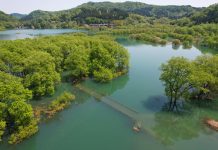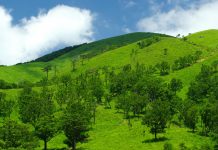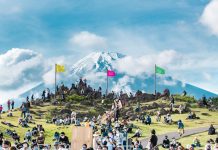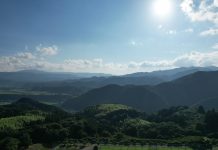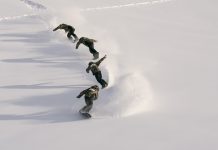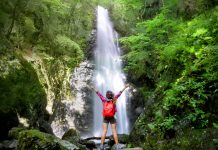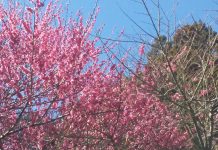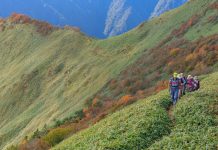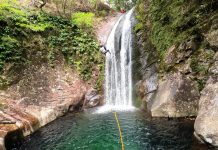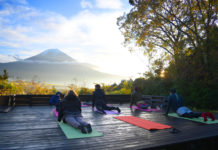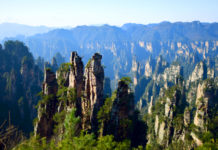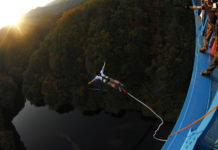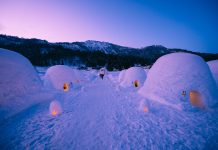A narrow strip of road leads four hours northward from Jaipur, through the desert to the land of Shekhavati, to extraordinary frescoed mansions in the sand.
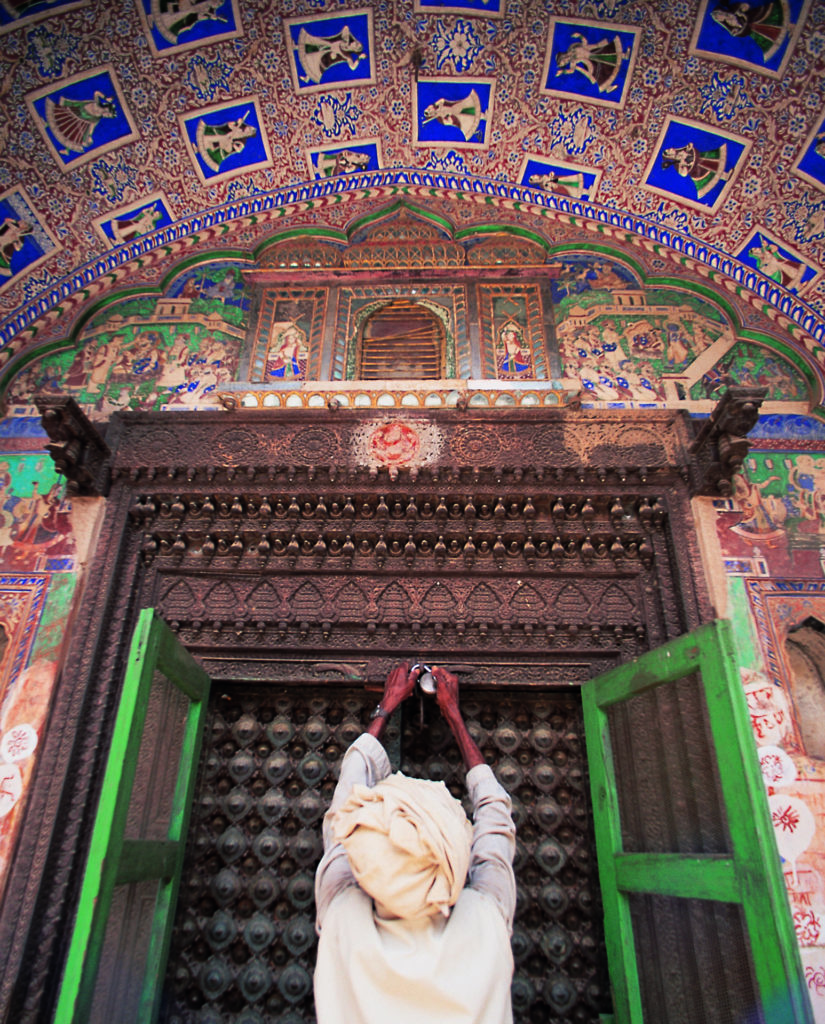
The historical romance of the maharajas and unparalleled colors of their culture draw countless travelers from more prosaic lands to the Indian state of Rajasthan. In the capital of Jaipur they pass their few days very rewardingly: looking over exquisite palaces such as the Hawa Mahal, taking an elephant ride to Amber Fort and shopping for splendid crafts and sparkling gemstones. It takes little more than a cursory glance around to see there is nothing but desert on every side.
Once upon a time, the now seemingly remote Shekhavati lay along the southern Silk Road. Innumerable heavily-burdened camels plodded this transit region with trade goods bound between the ports of Gujurat and the inland city of Delhi, stopping at the caravanserais along the way—in Fatehpur, Jhunjhunu, Lakshmangarh, Mandawa…
Much has been written of the heroic Rajput warriors who battled and loved their way across this landscape for centuries. Far less is heard of the prosperous merchants who, in fact, financially enabled their adventures in return for protection and privilege.
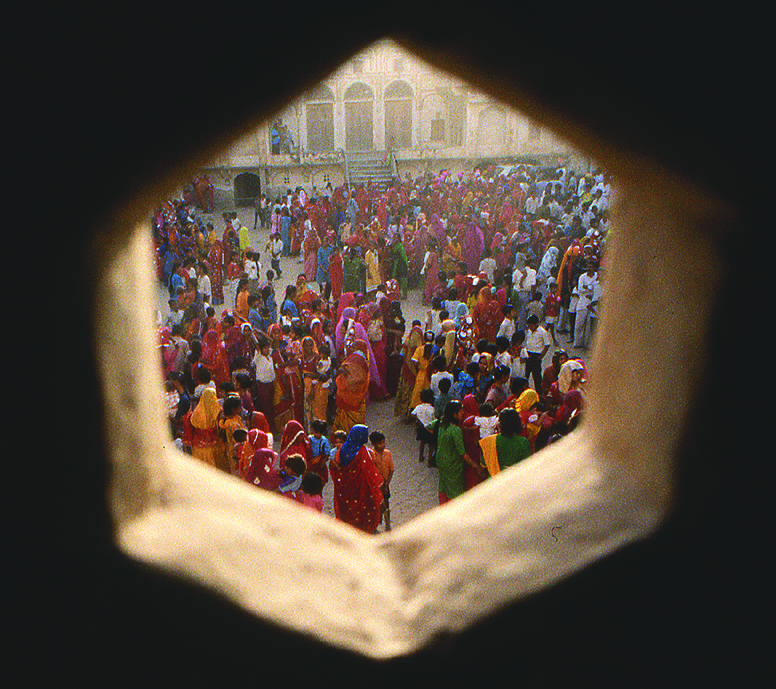
Those affluent Shekhavati traders compensated their large families for the extended absences due to the necessities of business by building enormous, comfortable mansions for them. At the same time, of course, they were tacitly proclaiming and monumentalizing their own status in the eyes of the townspeople and were socially obligated to contribute additional building projects to the public good.
Living as they did in this stark desert land nearly devoid of natural colors, perhaps it is not surprising they found a unique way to bring color and beauty into their lives. India’s earlier tradition of Mughal court painting was given a new interpretation here as mansion owners began to commission craftsmen to decorate the walls of their buildings. The painting technique was similar to that of the Italian fresco. A wet lime plaster surface acted as an adhesive for the colors, with additional beating and burnishing to drive the natural pigments into the plaster. The folk painters often depicted Hindu religious themes, as well as scenes of every-day life among Shekhavati’s upper class. Portraits of notable people and pictorialized local legends were popular subjects. Over and over again, the camel and elephant strode across the plaster walls, just as they did in the streets of Shekhavati.
As the British began to dominate Indian commerce in the 19th century, the Gujurat ports lost business to Calcutta (Kolkata), Bombay (Mumbai) and Madras (Chennai), while on overland routes trains were beginning to replace camels. Shekhavati’s astute businessmen relocated to the British centers of commerce, heading off alone to the great port cities, leaving their families behind in their havelis, as those once-vibrant towns began to fall quiet.
A number of those wealthy traders in their new circumstances eventually succeeded to amass even greater fortunes than before, enabling them to add to the opulence of their hometown havelis.
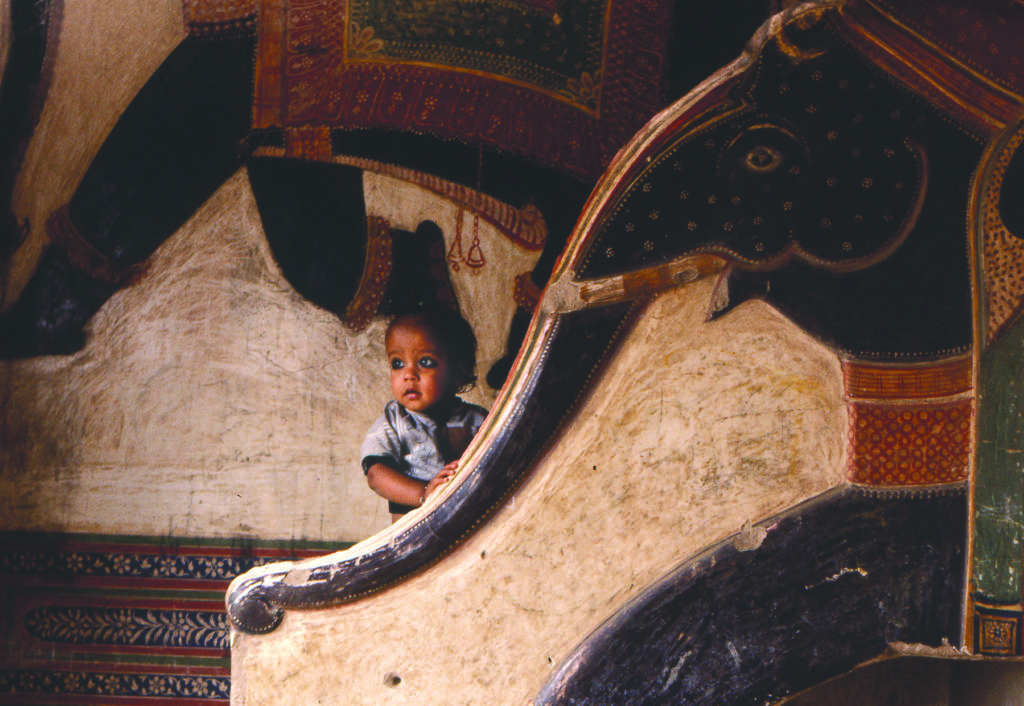
The word haveli is of Persian origin, meaning a surrounded or enclosed space. A haveli was built around one or more spacious courtyards and was three-to-five stories high. The form of the structure defined the way of life, for in Shekhavati a woman’s world was limited almost totally by the walls of her own home. How much more fortunate were the women whose walls were filled with beauty!
Many aspects of the British colonial way of life astounded the Indian people. As word of their remarkably different customs, inventions and eccentricities spread to these faraway towns, painters began to incorporate some of them into their frescoes. Soon automobiles were more popular subjects than elephants.
An English lord and lady, stuffed into their impractical woolen clothes in this hot land, strutted along with their pet dog on a leash. Strangely imagined trains, drawn not from sight but from hearsay, appeared on walls. Images of airplanes, telephones and phonographs amazed passers-by who had never seen and would never actually see the real thing.
Today life goes on in its quiet and unassuming way in the forgotten villages of Shekhavati. Along mostly unpaved streets, those decorative havelis still stand here and there. They are taken as much for granted as the endless desert sand with which they are surrounded. Many of the families eventually left them behind, joining their patriarch in their city homes, so today some of the havelis in Shekhavati remain locked, while others are tended by caretakers or let to tenant families. The faraway owners rarely have cause to return and, unfortunately, even less cause to invest in the upkeep of these old buildings. Preservation of cultural heritage is perhaps too vague a notion to appreciate and probably too costly to consider.
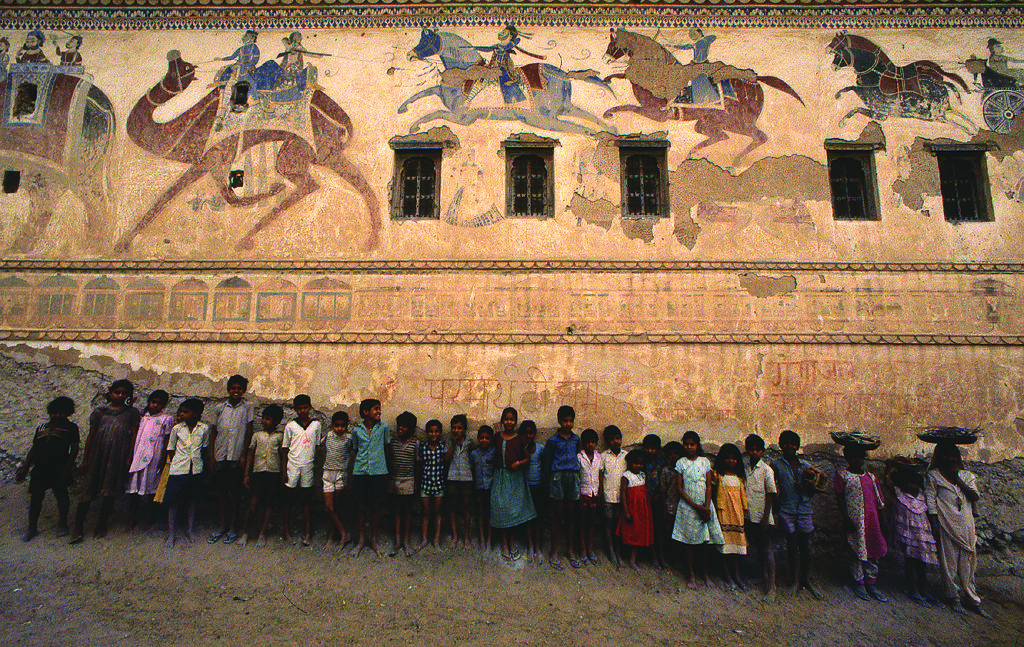
The relentless sun, wind and sand also seem to conspire against preservation so, season by season, these painted wallscapes pale and crumble. Could it be a decade more, maybe two or three, until many of them silently vanish, as though they had never been?

